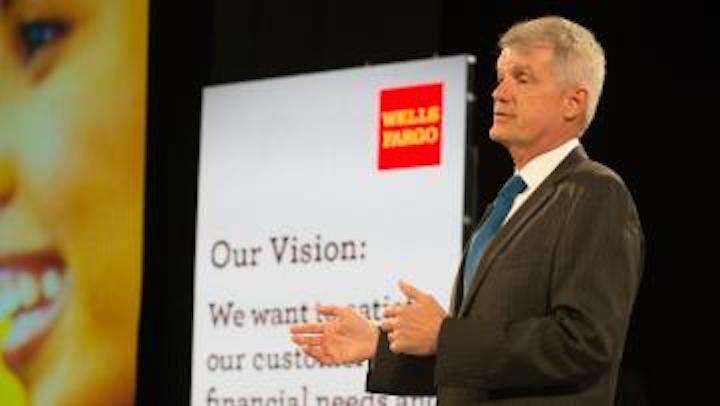Wells Fargo CEO Makes Strong Effort, Is Still Whacked by Senators

Especially for large or publicly traded companies, a major crisis will often involve the sadistic ritual known as “testifying before Congress.” This week, Wells Fargo CEO Tim Sloan got paddled — it’s the one-year anniversary of the bank’s fake-accounts scandal. But before the lawmakers had their way with him (and they did), Sloan did a decent job addressing the situation in his prepared statement.
Sloan appeared Tuesday before the Senate Banking Committee. He succeeded in his preliminary remarks because he did three basic things: he apologized, he provided numbers, and he laid out what actions the bank has taken to try to right itself.
The stakes were high. A year ago, Sloan’s predecessor, John Stumpf, appeared before the committee just after the scandal broke. Stumpf struggled to defend the bank; a week earlier he had blamed the problem on, not its culture, but its employees. Sen. Elizabeth Warren said he should resign, which seemed unlikely at the time. Three weeks later, he did.
Since then, an internal probe has found not just problems with setting up millions of accounts customers didn’t ask for, but in other areas too, such as making customers buy auto insurance they didn’t need.
I am deeply sorry for letting down our customers and team members.
— Wells Fargo CEO Tim Sloan
A big theme in Sloan’s statement was that the bank was too slow to recognize these problems. The previous year has been one of “great disappointment and transition at Wells Fargo,” he said.
“I am deeply sorry for letting down our customers and team members,” Sloan (pictured) said in his prepared remarks. That was the apology.
As for actions, he laid out the changes in personnel, organization, and incentives Wells Fargo has made in its retail bank; its review of other areas of the bank; and what it’s doing to make amends to its beleaguered customers.
Sales Goals
More specifically, Wells Fargo has eliminated sales goals, which created a pressure-cooker culture; hired back 1,780 employees who had left during that period; and centralized its structure. “Our previous structure contributed to a failure to see the threat that high-pressure sales goals posed to our Community Bank and our customers,” Sloan wrote. “This structure also contributed to our slow and insufficient response to that threat.”
Again, the specificity of a lot of Sloan’s mea culpa was good. For example, he said the bank is on pace to conduct 16,000 visits by “mystery shoppers” in its branches to test that the customer experience is up to snuff ethically and legally. And he mentioned how many individual and small-business customers it contacted in one quarter (43 million).
Still, Sloan was whacked by the senators. American Banker: “New CEO, Same Drubbing for Wells on Capitol Hill.” Warren again said the CEO of Wells Fargo (this time, Sloan) should be relieved of his job: “At best you were incompetent, at worst you were complicit. Either way, you should be fired.”
Sloan stood his ground and said he was the right person to be the bank’s CEO.
Photo Credit: Wells Fargo
This is an abridged version of an article that appeared today on the CrisisResponsePro paid subscription portal. (CrisisResponsePro subscribers can access the full version by clicking here. ID and password are required.) To take advantage of all of the content, data, and collaborative resources CrisisResponsePro has to offer, contact us at info@crisisresponsepro.com.




 Back to Blog
Back to Blog